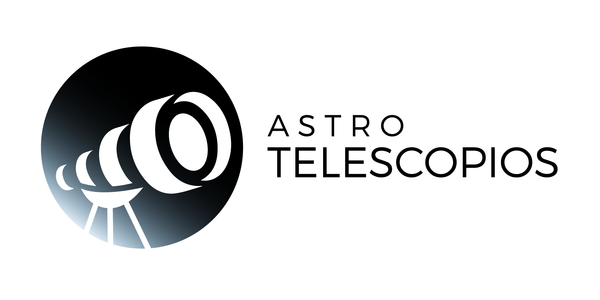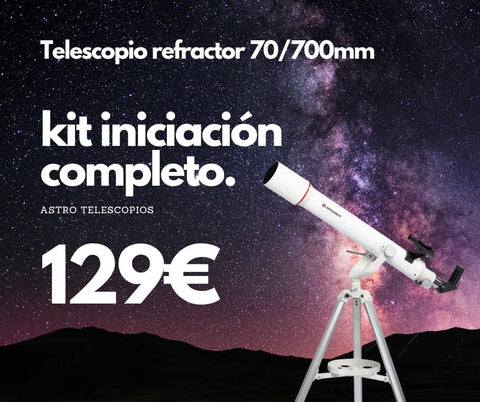
How to observe the planets with a 70 mm telescope
A telescope with a 70 mm aperture and 700 mm focal length is an ideal tool for observing the planets of the solar system. Although you will not be able to see details as precise as with larger aperture telescopes, you will be able to enjoy impressive views of these celestial objects.
Study before going out to observe
Check the position of the planets
Before we begin, it is important to know where the planets are in the sky. You can use astronomy apps like Stellarium or Sky Safari to get this information.
Choose a suitable place
Find a place with little light pollution and a clear view of the sky.
Set up your telescope
Mount the telescope and make sure it is well stabilized. Use a low-power eyepiece (e.g. 25mm or 20mm) to start.
Now is the time to observe
Focus on the planet
Look for the planet in the eyepiece and adjust the focus until it looks as sharp as possible.
Increase power
If you want to see more details, you can use higher power eyepieces (for example, 10mm or 5mm). However, please note that the field of view will be reduced.
Look at the details
Look at the characteristics of the planet, such as its phases, its rings, its moons or its clouds.
Take relevant notes for future observations
Write down what you observe so you can remember it later or compare it with other observations.
Some tips that will help you in planetary observation
- Use a lunar filter: If you observe the Moon, a lunar filter will help you reduce the brightness and see more details.
- Be patient: Astronomical observation requires patience and practice. Don't be discouraged if you don't see everything you want at first.
- Join an astronomy club: Joining an astronomy club is a great way to learn more about observing the night sky and share experiences with other amateurs.
What planets can you observe with a 70mm telescope?
- Mercury: It can be seen near the horizon just after sunset or just before sunrise.
- Venus: It is the brightest planet in the sky and can be observed during sunrise or sunset.
- Mars: It can be observed during opposition (when it is closest to Earth) and looks like a reddish disk.
- Jupiter: It is the largest planet in the solar system and can be observed throughout the night. You can see its cloud bands, its moons and its Great Red Spot.
- Saturn: It is famous for its rings and can be observed during opposition.
- Uranus and Neptune: They are very distant planets and can only be seen with larger aperture telescopes.
What 70mm telescope should I buy? They are all the same?
They are not all the same, there are different types of 70mm telescopes, in addition, some have 400 mm, 700 mm or 900 mm focal length. The focal length is an important parameter since the more focal length, the more magnifications you can have and in planetary observation the magnifications matter.
Therefore, the best 70mm telescope is the one with a 900mm focal length. But that does not mean that all the others are useless, because you can use a Barlow lens with 2, or 3 magnification factors, that will double or triple the focal length of your telescope. For example, a refractor telescope with a 700mm focal length, with a 2x Barlow, will have a focal length of 1400mm. Cool right? But make sure you have a quality lens.
You also have telescopes with a pushTo guidance system, which use your mobile phone to guide you in the sky, this is the case of the Celestron StarSense Explorer 70mm . And some 70mm/900mm telescopes are sold in equatorial mounts, considered the best for tracking objects. The Celestron Astromaster 70mm EQ refractor telescope allows the installation of a motor.
The 70mm/900mm equatorial mount telescopes are also available without tracking systems or motor, sold by the Levenhuk or Discovery brands, such as the 70/900 Blitz PLUS telescope or the Discovery Spark 709 EQ Telescope with book . These telescopes have a good price-quality ratio, for those who do not want to invest a lot up front.
But if what you are looking for is a beginner's telescope, where you can see the planets and learn without spending a lot of money, your telescope is the NANO 70/700 AZ , equipped with everything you need to get started. In addition, you will also be able to observe the Sun, since this telescope is sold with a solar filter included.

Above all, think that with a little patience and practice, you will be able to enjoy impressive views of the planets of the solar system through your 70 mm telescope, and if you have any questions, call us or write to us via WhatsApp for free advice.

